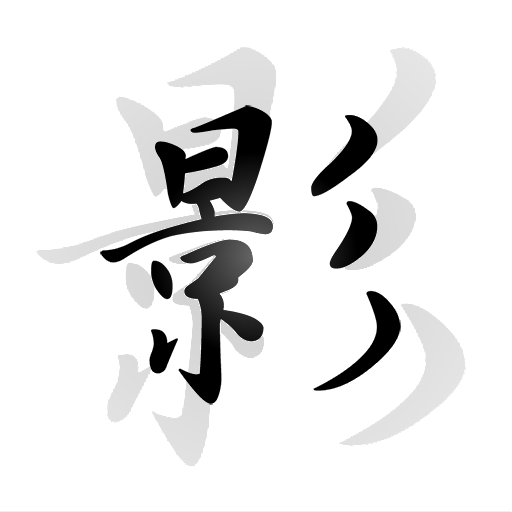気がつけば10ヶ月以上、更新してなかったんですね。今回は、GLSL(OpenGLShadingLanguage)を使って影の表現を試してみました。
GLSLとは?
GLSL(OpenGLShadingLanguage)は、WebGLにも採用されている、グラフィック描画に特化したプログラミング言語になります。GLSLはGPUによって解釈されるので、JavaScriptだけでは難しい高負荷な計算処理も、難なくこなす事が出来ます。
GLSL Sandbox
こちらのサイトでは、多くのGLSLのコードと、その結果を見ることができます。
GLSLのフラグメントシェーダーというもので、1つのドットに対して実行されるコードで、この計算式に自身の位置と、時間軸やマウス座標等を与える事で、そのドットが何色を表示するかという計算式になります。
実際に書いてみた
GLSLをWebサイトに導入する方法はWebGLを使うことですが、実際どんな感じになるのか、コードを書いてみました。
マウスを光源としたイメージで、後ろに影が映り込む感じのシェーダーを書いています。
ソースコードは以下より参照ください。
▼ HTML・JSコード
<canvas id="canvas" width="512" height="512"></canvas>
<canvas id="texture" width="512" height="512" style="display: none;"></canvas>
<script src="https://code.jquery.com/jquery-3.2.1.min.js"></script>
<script>
$(function () {
var WIDTH = 512;
var HEIGHT = 512;
// マウス座標
var mouseX = 0.5;
var mouseY = 0.5;
var moveX = 0.5;
var moveY = 0.5;
// テクスチャ用CANVAS
var textureCanvas = document.getElementById('texture');
textureCanvas.width = WIDTH;
textureCanvas.height = HEIGHT;
var textureContext = textureCanvas.getContext('2d');
textureContext.fillStyle = '#ffffff';
textureContext.fillRect(0, 0, WIDTH, HEIGHT);
// GLSL描画用CANVAS
var webglCanvas = document.getElementById('canvas');
webglCanvas.width = WIDTH;
webglCanvas.height = HEIGHT;
var webglContext = webglCanvas.getContext('webgl', {preserveDrawingBuffer: true});
webglContext.viewport(0, 0, WIDTH, HEIGHT);
// プログラムの取得
var program = webglContext.createProgram();
// テクスチャ読み込み
loadTexture('./texture.png', function(texture){
textureContext.drawImage(texture, 0, 0, WIDTH, HEIGHT);
// フラグメントシェーダ読み込み
loadFragmentShader('./fragment.glsl', function(shader){
// フラグメントシェーダ設定
var fragmentShader = webglContext.createShader(webglContext.FRAGMENT_SHADER);
webglContext.shaderSource(fragmentShader, shader);
webglContext.compileShader(fragmentShader);
webglContext.attachShader(program, fragmentShader);
// バーテックスシェーダ読み込み
loadVertexShader('./vertex.glsl', function(shader){
// バーテックスシェーダ設定
var vertexShader = webglContext.createShader(webglContext.VERTEX_SHADER);
webglContext.shaderSource(vertexShader, shader);
webglContext.compileShader(vertexShader);
webglContext.attachShader(program, vertexShader);
// シェーダをリンク
webglContext.linkProgram(program);
// プログラムオブジェクトの有効化
webglContext.useProgram(program);
// 頂点データ
var vertices = new Float32Array([-1, -1, 0, -1, 1, 0, 1, -1, 0, 1, 1, 0]);
var verticesBuff = webglContext.createBuffer();
webglContext.bindBuffer(webglContext.ARRAY_BUFFER, verticesBuff);
webglContext.bufferData(webglContext.ARRAY_BUFFER, vertices, webglContext.STATIC_DRAW);
var vertexAttr = webglContext.getAttribLocation(program, 'vertex');
webglContext.enableVertexAttribArray(vertexAttr);
webglContext.vertexAttribPointer(vertexAttr, 3, webglContext.FLOAT, false, 0, 0);
// テクスチャデータ
var texture = webglContext.createTexture();
webglContext.bindTexture(webglContext.TEXTURE_2D, texture);
webglContext.texImage2D(webglContext.TEXTURE_2D, 0, webglContext.RGBA, webglContext.RGBA, webglContext.UNSIGNED_BYTE, textureCanvas);
webglContext.generateMipmap(webglContext.TEXTURE_2D);
// テクスチャ座標
var coord = new Float32Array([0,1, 0,0, 1,1, 1,0]);
var coordBuff = webglContext.createBuffer();
webglContext.bindBuffer(webglContext.ARRAY_BUFFER, coordBuff);
webglContext.bufferData(webglContext.ARRAY_BUFFER, coord, webglContext.STATIC_DRAW);
var coordAttr = webglContext.getAttribLocation(program, 'coord');
webglContext.enableVertexAttribArray(coordAttr);
webglContext.vertexAttribPointer(coordAttr, 2, webglContext.FLOAT, false, 0, 0);
// マウス座標
$('#canvas').on('mouseenter', function(e) {
$('#canvas').on('mousemove', onMouseMove);
});
$('#canvas').on('mouseleave', function(e) {
$('#canvas').off('mousemove', onMouseMove);
mouseX = 0.5;
mouseY = 0.5;
});
function onMouseMove(e) {
mouseX = e.clientX / WIDTH;
mouseY = e.clientY / HEIGHT;
}
// レンダリング
render();
// レンダリング
function render() {
uniform = {};
// マウス座標のイージング
moveX += (mouseX - moveX) * 0.1;
moveY += (mouseY - moveY) * 0.1;
// uniform変数mouseのロケーション取得
uniform.mouse = webglContext.getUniformLocation(program, 'mouse');
// uniform変数をプッシュ
webglContext.uniform2fv(uniform.mouse, [moveX, moveY]);
// 描画
webglContext.drawArrays(webglContext.TRIANGLE_STRIP, 0, 4);
webglContext.flush();
webglContext.finish();
// 再起
requestAnimationFrame(render);
}
});
});
});
// テクスチャ読み込み
function loadTexture(src, cb) {
var image = new Image();
image.onload = function () {
cb(image);
};
image.src = src;
}
// フラグメントシェーダ読み込み
function loadFragmentShader(src, cb) {
$.ajax(src, {
type: 'get',
dataType: 'text'
}).done(function(data){
cb(data);
});
}
// バーテックスシェーダ読み込み
function loadVertexShader(src, cb) {
$.ajax(src, {
type: 'get',
dataType: 'text'
}).done(function(data){
cb(data);
});
}
});
</script>
▼ fragment.glsl
precision highp float;
varying vec2 vCoord;
uniform sampler2D texture;
uniform vec2 mouse;
void main(void){
vec2 position = vCoord;
float distance = length(position - mouse);
float textureX = ((position.x - mouse.x) / (1.0 + distance)) + mouse.x;
float textureY = ((position.y - mouse.y) / (1.0 + distance)) + mouse.y;
vec4 colorShadow = texture2D(texture, vec2(textureX, textureY));
vec4 colorBase = texture2D(texture, vCoord);
vec4 color = vec4(0, 0, 0, 0);
if (0.0 < colorBase.a && (colorBase.r < 1.0 || colorBase.g < 1.0 || colorBase.b < 1.0)) {
// Charactor Area
color.r = colorBase.r + ((0.2 - distance) * 2.0);
color.g = colorBase.g + ((0.2 - distance) * 2.0);
color.b = colorBase.b + ((0.2 - distance) * 2.0);
color.a = colorBase.a;
} else if (0.0 < colorShadow.a && (colorShadow.r < 1.0 || colorShadow.g < 1.0 || colorShadow.b < 1.0)) {
// Shadow Area
color.r = colorShadow.r + 0.8 + (distance * 0.2);
color.g = colorShadow.g + 0.8 + (distance * 0.2);
color.b = colorShadow.b + 0.8 + (distance * 0.2);
color.a = colorShadow.a;
}
gl_FragColor = color;
}
▼ vertex.glsl
attribute vec3 vertex;
attribute vec2 coord;
varying vec2 vCoord;
void main(void){
gl_Position = vec4(vertex, 1.0);
vCoord = coord;
}
まとめ
今回、初めてシェーダーを書いてみましたが、わからないことだらけで、ちゃんと勉強しなきゃいけない分野だなと実感しました。自由に操れれば、今までに無いような表現力をつけられるなと、とても可能性を感じます。GPUを使うことで、より複雑なアニメーションであっても、不可なく再現することができるのは、非常にありがたいことです。Webコンテンツでの活用方法を今後模索していきたいと思いました。
次回は、今回の表現をpixi.jsのカスタムシェーダーを使って、さらにリッチなものにしていきたいと思います。

